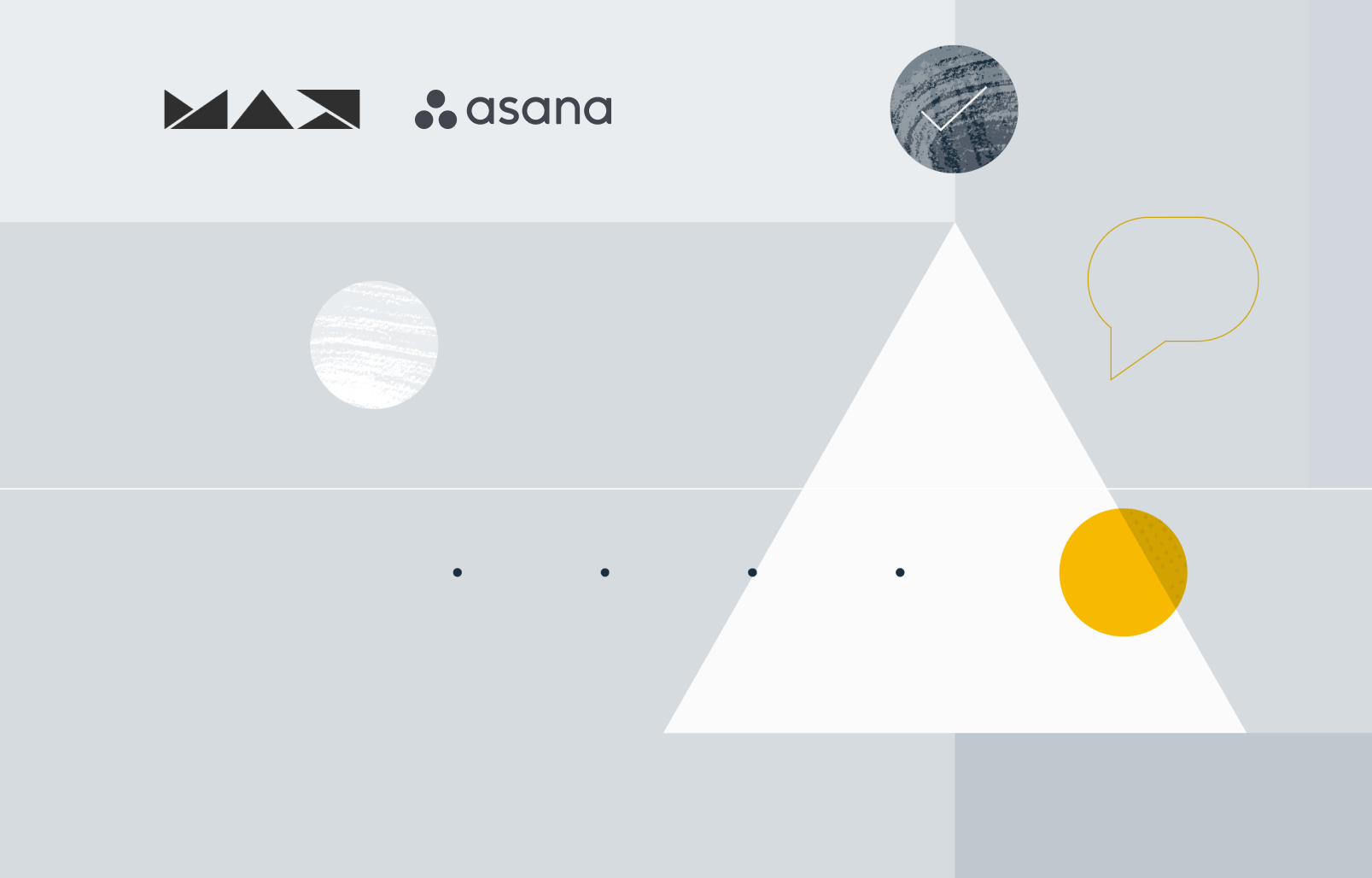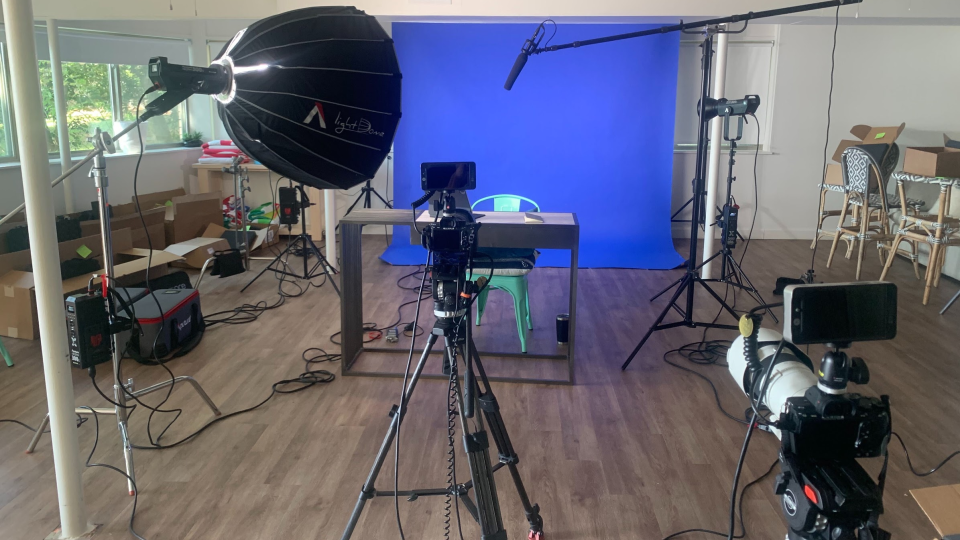The show must go on: 10 remote working lessons from Vox Creative’s Heather Pieske

As most marketing and creative team leaders can attest, managing a global marketing or creative program while keeping your team fully aligned and connected is challenging even under the most ideal circumstances. Doing so while working fully remote during a global pandemic—exponentially so.
When I joined Asana to run our global campaigns and regional marketing teams earlier this year, I felt like I’d been pushed into the deep end of an Olympic-sized swimming pool. The company had recently transitioned to remote work and, on top of the usual onboarding learning curve, I was grappling with uncertainty about how and when I’d reunite with my team in the office. Realizing that many of Asana’s own customers are and continue to be in similar positions, I wanted to hear directly from them about how it’s going, what they’ve learned, and how they’ve adapted to the new normal.
Last week at Adobe MAX, I sat down with Heather Pieske, multidisciplinary creative guru and Executive Creative Director at Vox Creative, Vox Media’s in-house branded content studio, to learn how her team is adjusting. Here’s what she had to say and why she relies on tools like Asana to keep the show going.
Q: How has your world changed since the start of remote work and COVID-19?
A: It’s been a wild ride. Our team has had to pivot in a lot of different ways, specifically in how we relate to each other as humans throughout the day, our production approach, and how we partner with clients to create amazing work. But fortunately, we’ve been set up for success in a lot of unexpected ways just by the nature of the content we make—like podcasts and explainer videos—and the collaboration tools and platforms we have at our disposal, like Asana.
Q: What are the biggest content trends you’re seeing right now? For example, what about the explainer videos are so compelling?
A: At their core, our explainer videos are about “simplifying the wonk.” They help our audiences understand important issues and provide a clear path to taking action, forming opinions, and getting involved. There’s a lot of confusing and stressful information out there right now, and we really think of this content as being in service to audiences who want to cut through that noise. We’re grateful to be able to tell our clients that this is something that will perform and at the same time, be additive to the lives of our audiences as well.
Q: So obviously creative work has two major stages: the creativity itself which is generating ideas, and then the operational process. Both are much harder in a remote environment. In a world where everyone is on Zoom, how do you stay creative?
A: We like to carve out time that feels unstructured, both for ourselves as individuals and in group meetings. In the past, we had the luxury of spending more time together in person and throwing things at the wall or being more fluid. Now everyone is overscheduled and fatigued, so we try to be really intentional about our time and finding the right spaces to connect that don’t overwhelm people. As a creative leader, I’m finding that my team becomes much more creatively energized when they have time to take a walk outside versus coming together as a massive group.
Q: How does that tie in to mental health?
A: Just as an example, I’ve taken to starting team meetings by asking the group “How’s your brain today?” This can sometimes turn into a therapy session, but I am still so grateful for it because acknowledging people’s emotions and human experience first and foremost, before diving into deliverables, is often the most productive and centering thing we can do.
Q: How do you approach critiques and team reviews in a remote setting?
A: Tools and platforms like Asana, Google Docs, Google Slides, and our Adobe programs now function as unique opportunities for us to connect. It sounds overwhelming, but it actually makes a big difference. Something as simple as not having to attend a long face-to-face to give kudos or leave comments saves us so much time and helps us be more productive.
Q: It sounds like when you dial in your operations, you’re able to unlock creativity more easily. Is that right?
A: Yes! That’s the thing I keep trying to hammer home for teammates and industry colleagues.
“I used to be the creative director that wanted to do everything in person and write our ideas with paper and pen. Now I’m like, ‘Can you put it in Asana and tag me?’ It’s seriously a lifesaver.”
Heather Pieske, Executive Creative Director at Vox Creative
Q: Tell us a little bit about how you’re managing remote filming and production?
A: There’s no one-size-fits-all answer to this. For example, during filming for the Asana explainer video, we dropped off a ton of equipment at our creative director’s house so he could transform his at-home spaces into a studio. For more nimble productions, it’s as simple as using more screen records, shipping ring lights to people, and even shooting video from our smartphones because the quality is so good.
Our rule of thumb is to let the creative ideas dictate the fidelity of what we need to do. We try not to succumb to the urge to make everything super polished as we would have pre-COVID. Most of our clients have embraced the “remote feel” and I like that right now. It’s almost its own genre or canon of work that will come out of this time.

Q: I imagine that’s also been freeing for your team creatively?
A: Yes and our audiences are responding positively too. Content is a little more homemade right now but it’s also more authentic. It’s kind of fun to acknowledge that we’re all in this together in the sense that there’s a lot going on behind the scenes. Our beds aren’t perfectly made, dogs are barking in the background, or maybe you’re filming at the kitchen table worried your internet is about to go out. All of those little experiences have factored into production which has given us all license to have a bit of grace in terms of what’s possible and what’s not. I’m taking advantage of it for now and so is my team. There’s nothing wrong with being human!
Q: Tell me how you’ve adapted customer communication and collaboration.
A: We’ve started being overly descriptive and contextual in everything that we share with our clients. Being extra intentional and including details like why we’re doing something or what treatments we’re using really helps minimize questions on their end and makes them feel as though they’re part of the process. I’m definitely texting more clients than ever before but I like it, it feels more human and one-on-one. We also make it a point to invite them into Asana if they use it, to help them stay up to date and feeling confident about where work stands.
Q: Are there practices you’ve adopted that you’ll continue to do, even after you go back to the office?
A: I think taking a human-first approach to work is something that will remain for our team. It’s certainly made our work better and our team closer. But I’m also of the mindset that remote work is a great model if you have the privilege of doing it and being productive. We now know without a shadow of a doubt it’s possible to stay connected and manage projects without being in the same room for 14 hours a day. And I’m confident remote management tools will only get better with time.
Run all of your marketing and creative processes with Asana
If you’re curious how Asana can help your team manage work, stay connected, and hit your most important deadlines and goals from anywhere, try a free trial of Asana Premium today.

